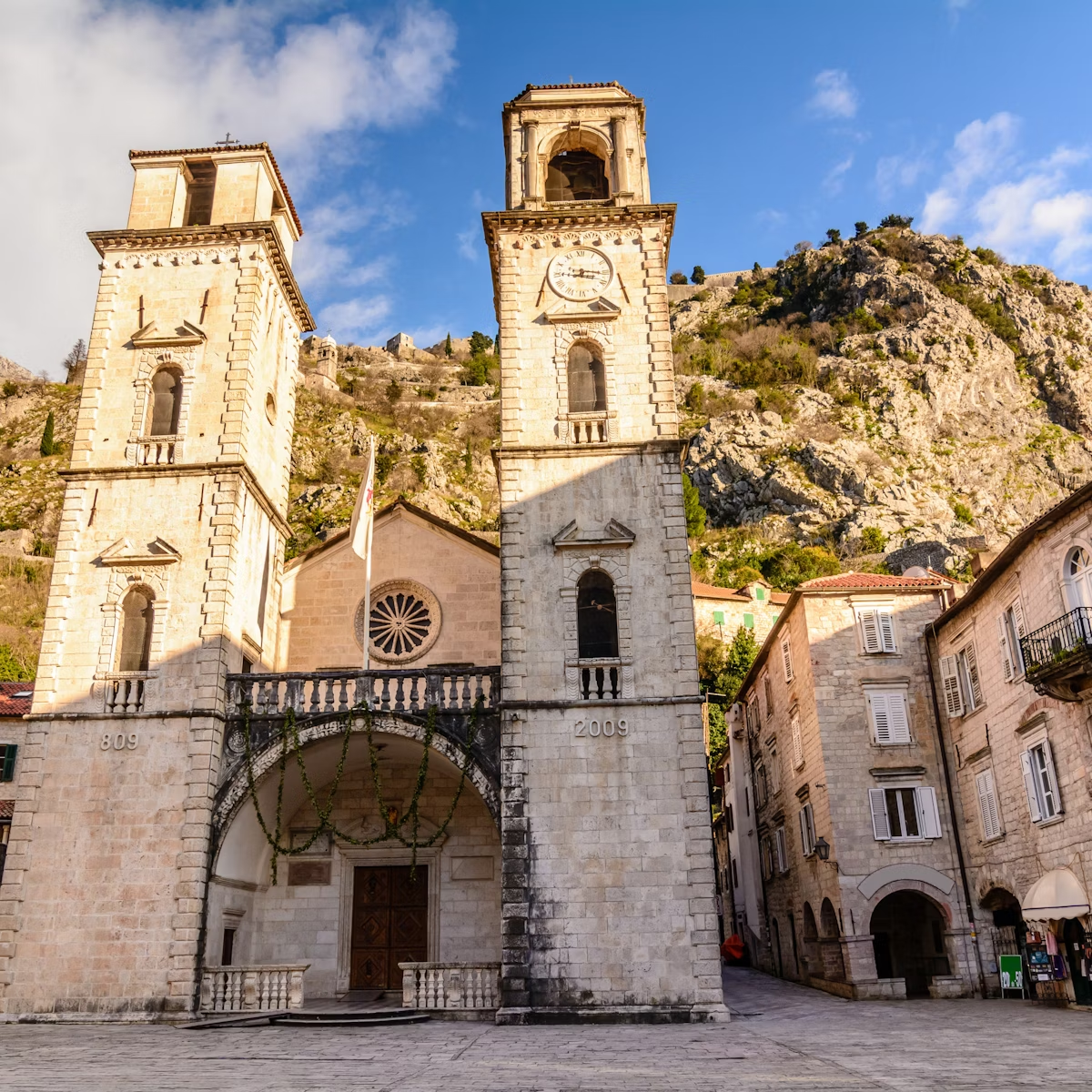Literally the 'square between the churches', this open area below the citadel provides a visual reminder of the once-cosy relationship between Orthodox and Catholic Christians in this area.
Beautiful frescoes cover the walls and ceiling of Holy Trinity Church, in the centre of the square. Constructed in 1804 out of stripes of pink and honey-coloured stone, this Orthodox church is the only one of the square's interesting cluster of churches that is regularly open.
The largest of the churches is Catholic St John the Baptist's Church, which was built towards the end of the 12th century and served as a cathedral until 1828 (Budva is now part of the diocese of Kotor). Parts of it possibly date from as early as the 9th century, and the last earthquake revealed the foundations of its predecessor, a 5th-century basilica, beside it. A side chapel houses the Madonna of Budva – a 12th-century icon venerated by Catholic and Orthodox Budvans alike. There's also a colourful mosaic by Ivo Dulčić behind the altar. Opening hours are sporadic.
Built into the city walls are two tiny churches, which are rarely open. Budva's oldest remaining church is Catholic St Mary's in Punta, dating from 840. Immediately next to it is St Sava's Church, named after the founder of the Serbian Orthodox Church; it once had both Orthodox and Catholic altars.




